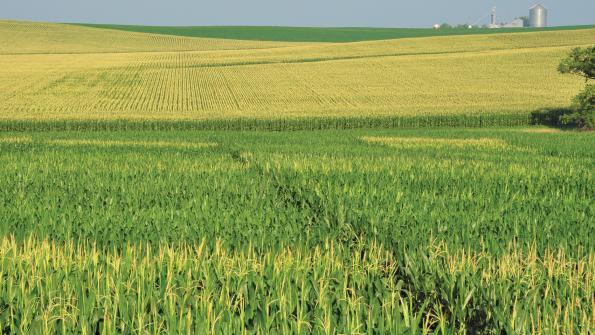September 5, 2012

Crop insurance will make large payments this year as a result of reduced yields caused by the drought. Contributing to these large payments is the fact that most farmers purchased Revenue Protection (RP), a revenue insurance that has the harvest price option. Under the harvest price option, revenue guarantees increase when the harvest price exceeds the projected price. Crop insurance would have been lower had farmers purchased insurance with the harvest price exclusion. The harvest price option is coming under scrutiny from a policy perspective (see here).
According to 2012 Summary of Business data available from the Risk Management Agency, the percentages of corn acres insured by various crop insurance products are:
• Revenue Protection (RP) is used to insure 83% of insured acres,
• Revenue Protection with Harvest Price Exclusion (RPHPE) is used to insure 3% of insured acres,
• Yield Protection (YP) is used to insure 11% of insured acres, and
• Group products are used to insure 3% of acres.
By far the most used product is RP with an 83% share of insured acres. RP has the harvest price option. By way of comparison, RPHPE which does not have the harvest price option only has 3% share of insured acres.
Impact of the harvest price option on crop insurance payments
Impacts of the harvest price guarantee increase are illustrated by comparing crop insurance payments between RP and RPHPE using the following factors:
1. Corn,
2. The 2012 projected price of $5.68 per bu.,
3. A Trend Adjusted Actual Production History (TA-APH) yield of 175 bu.,
4. An 80% coverage level,
5. A harvest yield of 120 bu. per acre, and
6. A harvest price of $8.00 per bu. The harvest price will be set based on settlement prices of the December Chicago Mercantile Exchange (CME) during the month of October. Currently, the December contract price is close to $8.00 per bu.
RP uses the higher of the projected or harvest price in setting its guarantee. Under the above scenario, RP has a guarantee of $1,120 per acre (175 bu. TA-APH yield x $8.00 harvest price x 80% coverage level). Revenue for insurance purposes is $960 per acre (120 bu. yield x $8.00 harvest prices), resulting in a crop insurance payment of $160 per acre ($1,120 guarantee - $960 revenue).
RPHPE only uses the projected price in setting its guarantee. Under the above scenario, RPHPE has a guarantee of $795 per acre (175 bu. TA-APH yield x $5.68 projected price x 80% coverage level). Similar to RP, RPHPE has revenue of $960 (120 bu. yield x $8.00 harvest price). Because the $960 per acre revenue is above the $795 per acre guarantee, RPHPE will not make an insurance payment.
Why have the harvest price option?
The harvest price option exists to protect farmers who hedge production prior to harvest (see here for a discussion of RPHPE as an alternative to RP). Pre-harvest hedging results in losses when yields decline and prices increase, typical drought years. A prime example of a drought year is 2012.
To illustrate, take the above insurance example. Revenue without considering basis is $960 per acre, RP insurance payment is $160 per acre, and RPHPE insurance payment is $0 per acre. If a farmer had hedged production at the projected price of $5.68 and lifts the hedge at the harvest price of $8.00, each bushel that is hedged has a hedging loss of $2.32 per bu. ($8.00 harvest price - $5.68 projected price). If 100 bushels were hedging, hedging losses equal $232 per acre ($2.32 per bu. loss x 100 bu.). Under this hedging scenario, total revenue with RP insurance will be $880 per acre ($880 = $960 crop revenue + $160 crop insurance payment - $240 hedging loss). The $160 crop insurance payment partially offsets the $240 hedging loss. Total revenue under RPHPE will be $720 per acre ($960 crop revenue + $0 crop insurance payment - $240 hedging loss). The crop insurance payment does not offset the hedging loss, results in $160 lower revenue with RPHPE than under RP.
Summary
The harvest price option will result in higher crop insurance payments this year than had not the harvest price option existed. The harvest price option is designed to protect farmers who pre-harvest hedge. Hedging in drought years often results in large losses, potentially destabilizing the farm’s financial structure. The harvest price option protects against this situation.
You May Also Like




